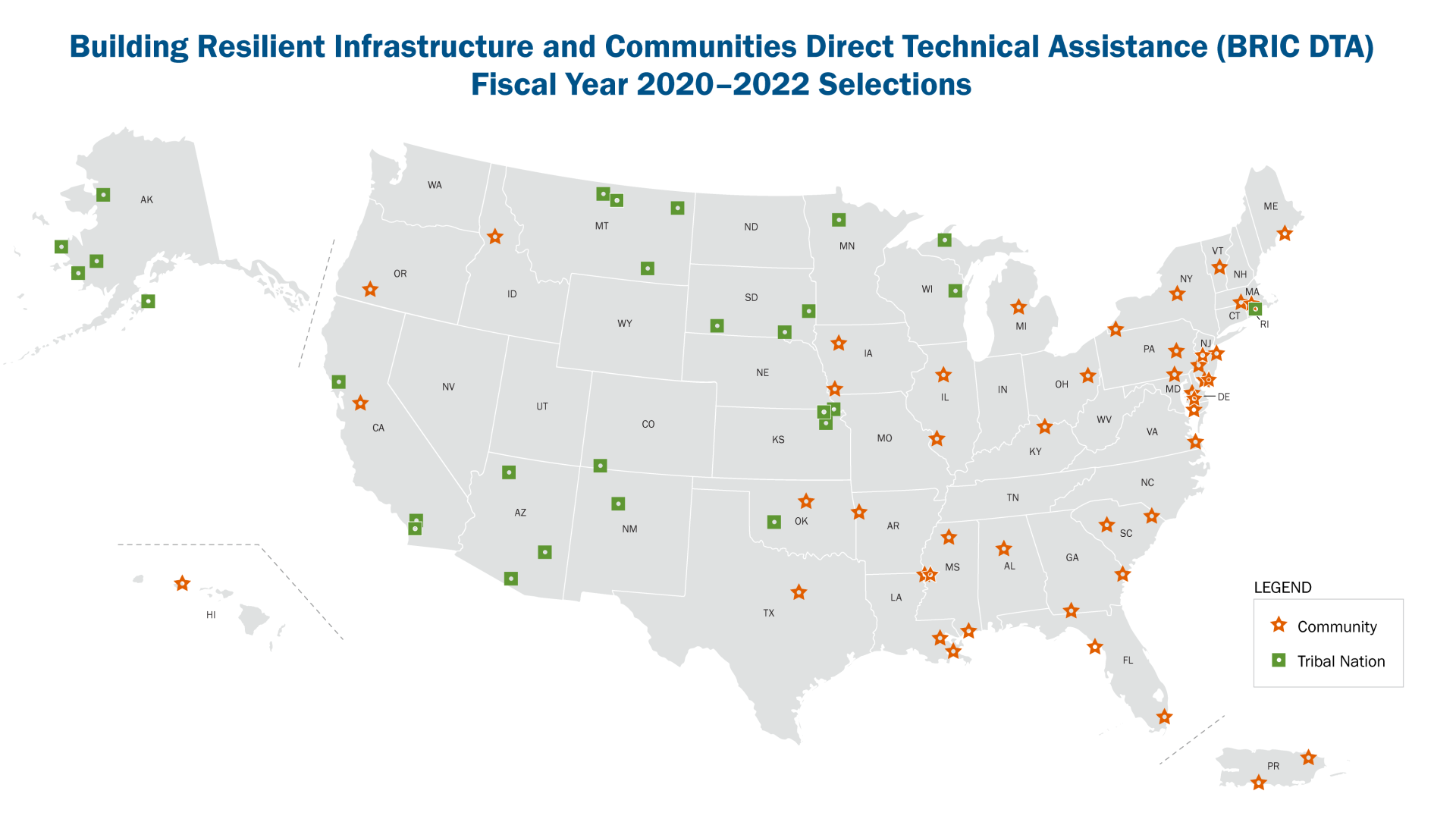Through the Building Resilient Infrastructure and Communities Direct Technical Assistance initiative, FEMA can provide holistic hazard mitigation planning and project support at the earliest stages to communities, tribal nations and territories requesting assistance. This non-financial assistance helps communities and tribes in reducing disaster damage, building community resilience, and sustaining successful mitigation programs.
During the process, FEMA will engage with each community to further explore and better understand their specific requests for technical assistance.
In May 2023, FEMA announced 26 additional communities and 20 tribal nations that were selected for this initiative. With the current 28 communities and tribes, this increases the number to 74 selected to receive support from BRIC Direct Technical Assistance. FEMA will provide support to selected communities for up to 36 months.
The graphic below is a map of the United States that shows all 74 communities and tribal nations selected for BRIC DTA between fiscal years 2020 and 2022.

Summaries of Requested Direct Technical Assistance
Filter by the year the assistance was awarded, and/or by state or region, to find communities.
For additional information about the non-financial direct technical assistance listed below, please contact your FEMA Regional Office.

